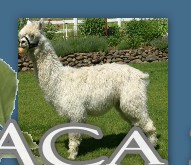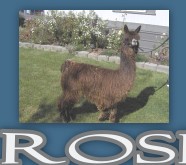|
Alpaca Info Library
What
is an Alpaca?
The
Alpaca (Vicugna pacos) is a
domesticated species of South American camelid
developed from the wild alpacas. It resembles a sheep in
appearance, but is larger and has a long erect neck as
well as coming in many colors, whereas sheep are
generally bred to be white.
Alpacas
are kept in herds that graze on the level heights of the
Andes of Ecuador, southern Peru, northern Bolivia, and
northern Chile at an altitude of 3500 to 5000 meters
above sea-level, throughout the year. Alpacas are
considerably smaller than llamas,
and unlike them are not used as beasts of burden but are
valued only for their fiber.
Alpacas only have fleece fibers, not woolen fibers, used
for making knitted and woven items much as sheep's wool
is. These items include: blankets, sweaters, hats,
gloves, scarves, a wide variety of textiles and ponchos
in South America, and sweaters, socks and coats in other
parts of the world. The fiber comes in more than 52
natural colors as classified in Peru, 12 as classified
in Australia and 22 as classified in America. Alpacas
and llamas differ in that llamas have banana shaped ears
and long tails and alpacas have straight ears and stubby
tails. Aside from these differences, llamas in general
are on average 1-2 feet taller, and bigger in proportion
than alpacas.
In
the textile industry, "alpaca" primarily
refers to the hair of Peruvian alpaca, but more broadly
it refers to a style of fabric originally made from
alpaca hair but now often made from similar fibers, such
as mohair, Icelandic sheep wool, or even high-quality
English wool. In trade, distinctions are made between
alpacas and the several styles of mohair and luster.
---------------------------------------------------------------------------------------------------------------------------------------

|























